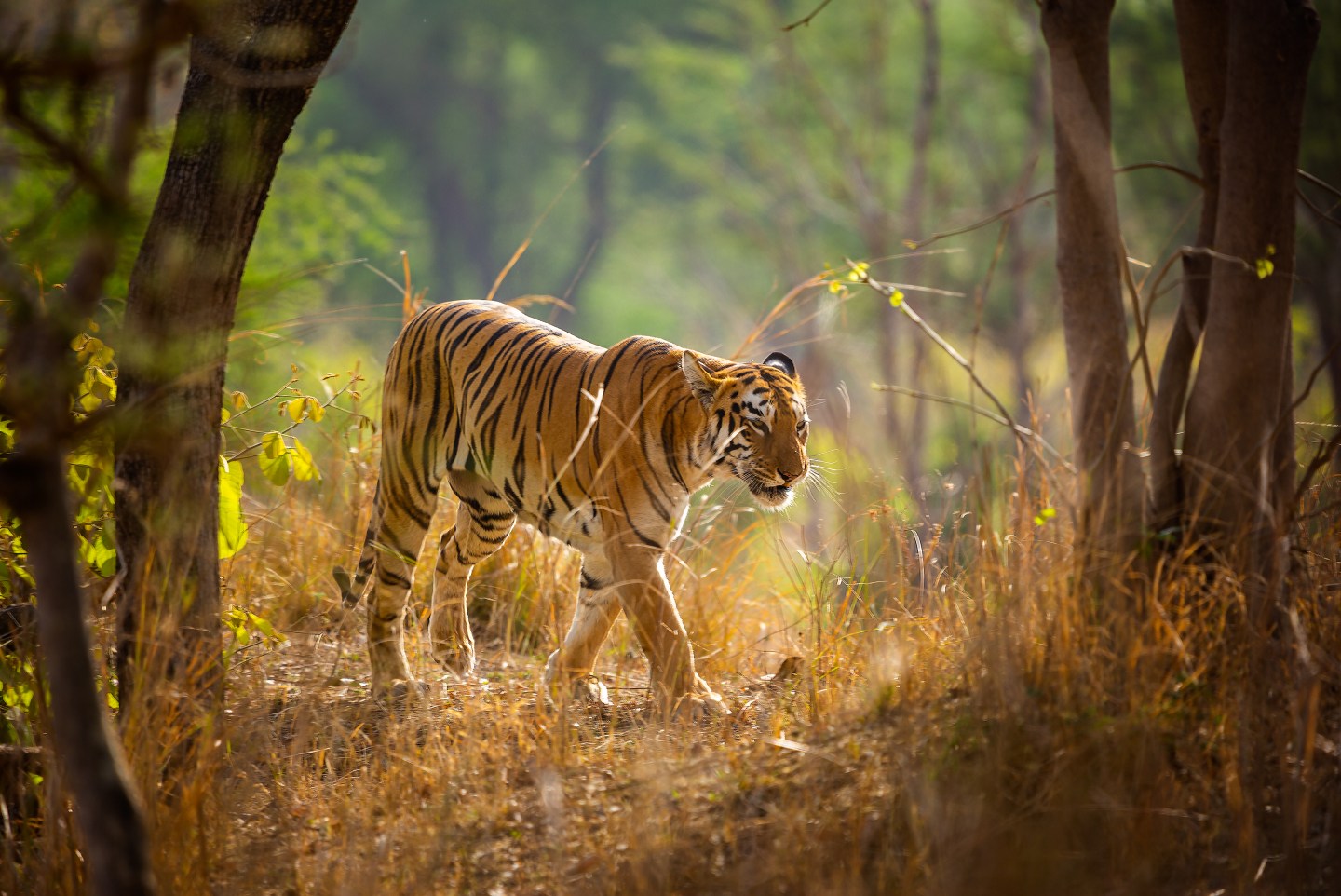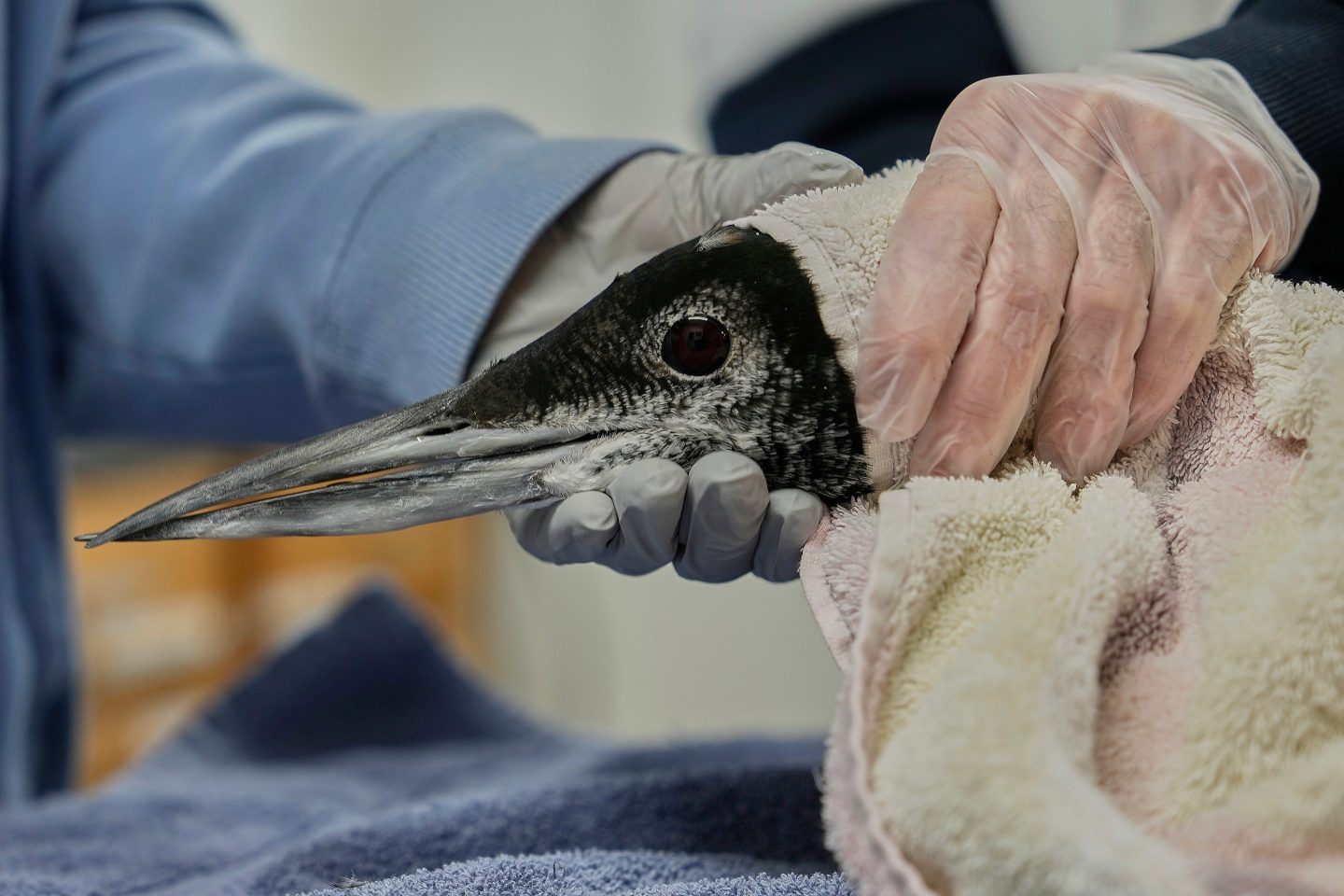Authorities worldwide have seized an average of nine tigers each month over the past five years, highlighting a worsening trafficking crisis that threatens the survival of one of the planet’s most iconic species, according to research released Tuesday.
A new report by wildlife trade monitoring network TRAFFIC warned that criminal networks are evolving faster than conservation efforts can respond. The global wild tiger population, once around 100,000 a century ago, has now plummeted to an estimated 3,700-5,500, it said.
Despite half a century of international protection, TRAFFIC’s findings showed that tiger trafficking is accelerating and increasingly targeting whole animals, living or dead. Experts say the shift appears linked to captive-breeding operations, but may also reflect tigers being seized shortly after poaching or before being dismembered for their parts. Additionally, it could be driven by a rise in exotic pet ownership or demand for taxidermy, they say.
The report, the sixth in TRAFFIC’s Skin and Bones series examining the illegal trade in tigers, highlights stark trends. Between 2000 and mid-2025, law enforcement agencies globally recorded 2,551 seizures involving at least 3,808 tigers.
In the five years from 2020 to June 2025 alone, authorities made 765 seizures, confiscating the equivalent of 573 tigers, roughly nine a month over 66 months. The worst single year was 2019, when 141 seizures were recorded, followed by 139 in 2023.
Most of the seizures occurred within the 13 countries which have wild tiger populations, led by India with the world’s biggest tiger population, China, Indonesia and Vietnam. Among countries without tigers, a sizable number of incidents were reported by Mexico, U.S. and the United Kingdom, the report said. While enforecement has strengthened, so has trade.
“This rise reflects improved enforcement efforts but also signals persistent and, in some areas, escalating criminal activity and a widespread demand for tigers and their parts,” said Ramacandra Wong, senior wildlife crime analyst and co-author of the report.
TRAFFIC’s latest analysis reveals a dramatic shift: In the 2000s, tiger parts accounted for 90% of seized products but since 2020 that proportion has dropped to 60%, replaced by a spike in seizures of whole animal carcasses and live tigers. More than 40% of confiscations in countries such as Vietnam, Thailand, Indonesia and Russia now involve whole tigers.
The report identified entrenched hotspots where interventions should be prioritized: India and Bangladesh’s tiger reserves; Indonesia’s Aceh region; along the Vietnam–Laos border; and Vietnam’s major consumption hubs, including its capital Hanoi and Ho Chi Minh City.
The report also documents growing “species convergence” with almost one in five tiger trafficking incidents involving other threatened wildlife — most commonly leopards, bears and pangolins.
Patterns of consumption vary sharply by geography. In Mexico and the United States, demand trends toward live tigers, often for exotic pet ownership. Europe shows a stronger market for tiger derivatives used in certain traditional medicines and taxidermy for decoration. Across Asia, demand spans skins, bones, claws and whole dead animals for fashion and traditional medicine.
The report said investigations should not end at the point of seizure. It said strong international cooperation is crucial, and that disruption of organized crime network along the illegal trade chain through intelligence-led, multi-agency enforcement is essential.
Leigh Henry, director of wildlife conservation at the environmental charity WWF, told The Associated Press that the surge in whole-animal trafficking underscored the “prominent role of captive tiger breeding facilities in feeding and perpetuating the illegal trade.”
“Illegal trade remains the greatest immediate threat to wild tigers. If we don’t urgently scale up investments to combat tiger trafficking — at all points along the trade chain — we absolutely face the possibility of a world without wild tigers,” she said.











